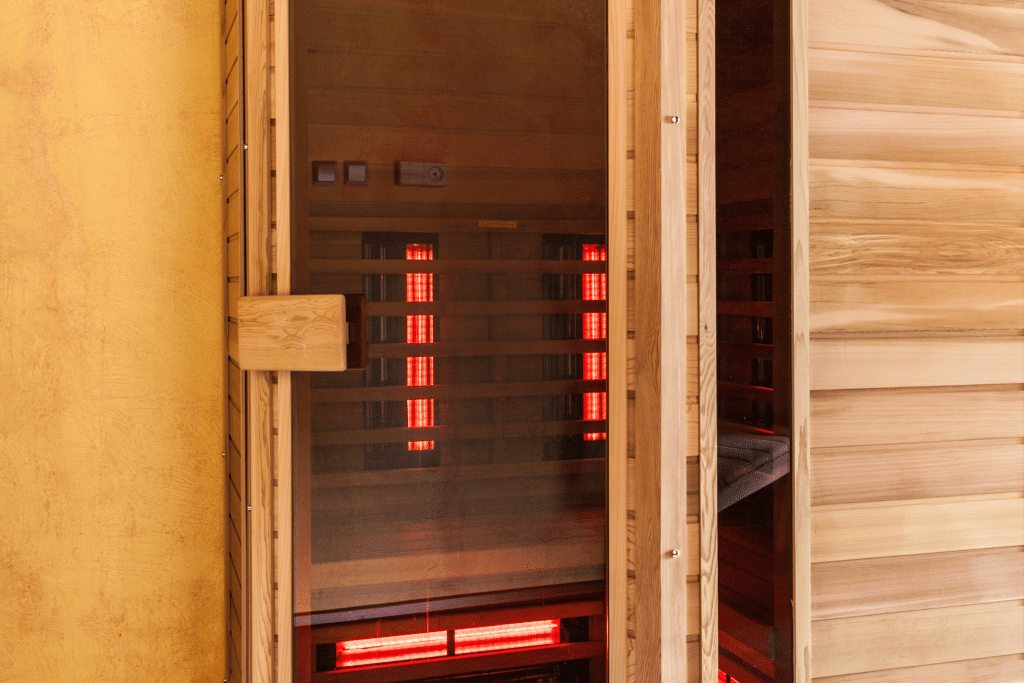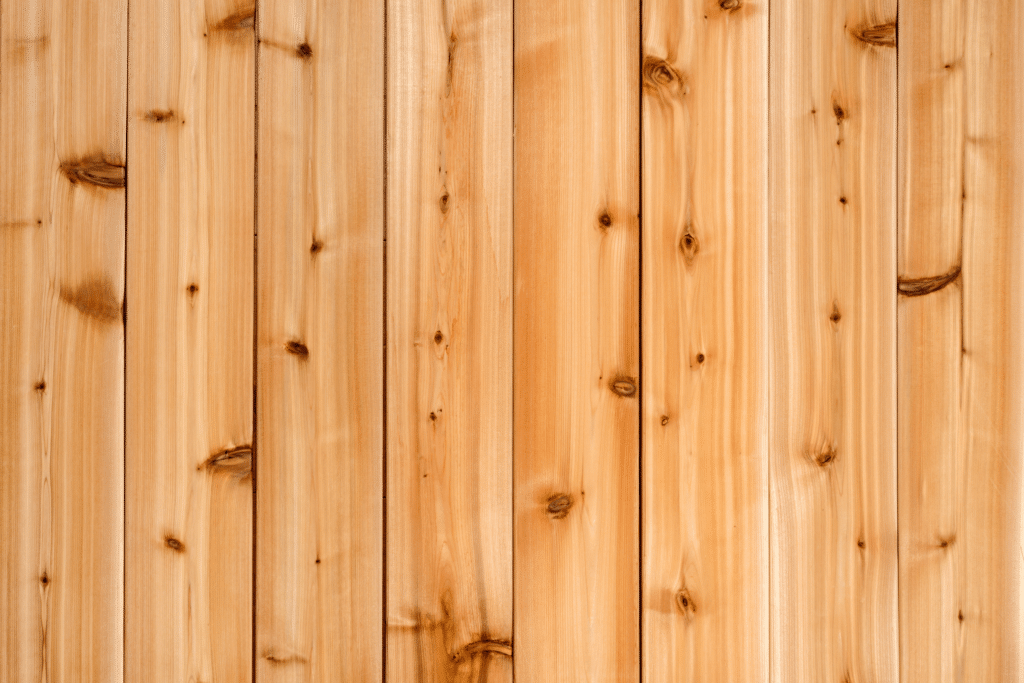It is becoming increasingly common for people to purchase infrared saunas for personal use at home but those without space inside their house or apartment might wonder if they can put their infrared sauna outside to save space indoors.
Most infrared saunas are designed for use indoors and aren’t supposed to be exposed to the elements, but some models can be placed outside of your home with proper planning and execution.
To properly install an outdoor infrared sauna, you’ll need to ensure it’s built from weather-resistant materials and has appropriate insulation against the elements. Additionally, location plays a vital role, as you’ll want to choose a spot that offers adequate protection from direct sunlight, rain, and potential moisture damage.
Read on and find out more about infrared sauna, which makes it different from traditional saunas, and how it can benefit you. We will also discuss how you can tell if your infrared sauna can be placed outdoors or designed only for indoor use.
Indoor infrared saunas vs. outdoor infrared saunas
Both indoor and outdoor saunas offer similar benefits.
The primary difference lies in their location and installation:
- Indoor Saunas: Installed inside your home, indoor saunas are more convenient, allowing you to use them any time without having to step outside. But they may require modifications to your home, such as increased ventilation or dedicated electrical circuits.
- Outdoor Saunas: Installed outside your home, outdoor saunas provide a more natural setting and keep the heat and humidity separate from your living space. They require a level, sturdy surface and proper insulation to protect them from the elements.

Can an infrared sauna go outside?
An infrared sauna can be installed outdoors, but there are several important considerations to keep in mind.
Outdoor installation may offer a more natural and spacious environment, but it also exposes the sauna to various weather conditions like rain, wind, and snow, which can impact its performance and durability. It’s crucial to use materials like cedar wood that are resistant to decay and moisture, and to opt for an electric heater designed specifically for outdoor use.
Adequate insulation is essential for thermal efficiency, and additional weatherproofing measures like high-quality covers and protective flooring should be considered. Ensuring compliance with local building codes and having access to a proper power supply are other key factors.
Therefore, while an outdoor installation is certainly possible, it requires careful planning and additional protective measures to ensure long-lasting performance and safety.

Finding the best place to install an infrared sauna – important considerations
Let’s go into more detail with each of those important considerations.
| Factor | Indoor Use | Outdoor Use |
|---|---|---|
| Environment | Easily accessible and protected from the elements. | Offers a more natural and spacious environment for enhanced relaxation. |
| Space Requirements | Typical dimensions for small model: 4′ x 3′ x 6′ high. | Same as indoor, but consider additional space for protective elements. |
| Additional Space Needed | Factor in a few feet around for ventilation and safe entry and exit. | Same as indoor, but consider additional space for weatherproofing. |
| Power Supply | Requires access to a nearby electrical outlet, preferably a dedicated circuit. | May need consultation with a qualified electrician for proper supply, grounding, and code adherence. |
Indoor Use Vs Outdoor Use
When choosing a location for your infrared sauna, consider whether you plan to use it indoors or outdoors. Indoor use offers the convenience of being easily accessible and protected from the elements. On the other hand, placing your sauna outdoors can provide a more natural and spacious environment, potentially enhancing your relaxation experience.
Space Requirements
To ensure proper operation and safety, it’s essential to allocate an adequate amount of space for your infrared sauna. Typical dimensions for a small model are around 4′ by 3′ by 6′ high.
Make sure to factor in an additional few feet around the sauna to allow for proper ventilation and safe entry and exit. Remember to account for the size of your sauna when selecting an indoor or outdoor location.
Relation to Running Power Supply
Your infrared sauna will require access to a power supply to run efficiently. If you choose an indoor location, make sure there’s a suitable electrical outlet nearby, preferably a dedicated circuit to avoid overloading.
For outdoor installations, you may need to consult with a qualified electrician to ensure proper power supply, grounding, and adherence to electrical codes.
Adhering to Local Building Codes
Before installing your infrared sauna, familiarize yourself with local building codes and regulations. These codes ensure the safe and proper installation of structures in and around your home.
Depending on your location, you may need permits or inspections for electrical work, foundation, and other construction aspects. Following local codes and guidelines will ensure the safety and longevity of your infrared sauna while also protecting your investment.

Specific considerations for installing an infrared sauna outside
Weather Impact
When installing an infrared sauna outdoors, you need to consider the impact of various weather conditions, such as rain, wind, and snow. These elements can affect the performance of your sauna and potentially cause damage to its structure.
To minimize the impact of weather, choose a location that offers natural protection, such as placing your sauna under a covered patio or against the side of your house.

Insulation Requirements
Proper insulation is crucial for maintaining the desired temperature and energy efficiency of your outdoor sauna. Infrared saunas typically require less insulation than traditional steam saunas due to their different heating mechanisms.
When insulating your outdoor infrared sauna, focus on sealing any gaps or cracks in the structure to prevent drafts and moisture infiltration. Look for insulation materials with a high R-value to ensure optimal thermal performance and protection against temperature fluctuations.
| Insulation Material | R-value |
|---|---|
| Fiberglass Batt | 3.0 – 4.0 per inch |
| Rigid Foam Board | 3.8 – 6.5 per inch |
| Spray Foam | 3.5 – 6.5 per inch |
Covering and Protection
Protecting your outdoor sauna from the elements is essential to prolong its lifespan and maintain its efficiency. Opt for a high-quality sauna cover that fits the dimensions of your infrared sauna.
This cover should be waterproof, UV-resistant, and capable of shielding your sauna from rain, snow, and wind. It’s also a good idea to invest in a protective mat or flooring for your sauna to prevent moisture and dirt from seeping in through the bottom.
Keep these considerations in mind when planning to install an infrared sauna outside to ensure ideal performance, protection, and durability.
Which materials and equipment work best for outdoor infrared saunas?
Cedar Wood Sauna
Cedar wood is a popular choice for outdoor infrared saunas due to its natural resistance to decay and moisture. It has a beautiful aroma, is naturally insulating, and can withstand the outdoor elements quite well.
To maintain the appearance and longevity of a cedar wood sauna, you should periodically treat it with a wood sealant or stain. This will help protect it from the weather and ensure a longer lifespan of your outdoor infrared sauna.

Electric Heater for Outdoor Sauna
An electric heater is essential for an outdoor infrared sauna. When choosing an electric heater, make sure it’s specifically designed for outdoor use. Outdoor electric sauna heaters are built to be durable and resistant to weather conditions.
They often come with waterproof, rust-resistant housings and electrical components that are designed to handle fluctuations in temperature and humidity.
Additionally, choose a heater with an appropriate power rating for the size of your sauna to ensure efficient heating and functionality.
Having a well-insulated sauna
A well-insulated sauna is crucial for an outdoor infrared sauna to function efficiently. Insulation not only helps to maintain the desired temperature but also ensures efficient energy consumption.
To keep your sauna well insulated:
- Opt for double-pane thermal glass windows as they provide better insulation than single-pane windows.
- Install weatherstripping on doors and windows to prevent heat loss and air leaks.
- Use insulated foam panels or other efficient insulation materials on the sauna walls, floor, and ceiling.
Remember to periodically check and maintain your outdoor infrared sauna’s insulation to ensure long-lasting and efficient performance. By using appropriate materials and proper maintenance, your outdoor infrared sauna can withstand the elements, provide a relaxing experience, and last for many years.
Maintenance and Warranty Aspects
Regular Cleaning
To keep your infrared sauna in top condition, it’s essential to regularly clean and detoxify it. Start by wiping down the surfaces with a damp cloth to remove sweat and dirt.
Avoid using harsh chemicals, as they may damage the wood or other materials. Instead, opt for natural solutions like vinegar and water. Maintain good air circulation inside the sauna by opening the vents after each use. This helps to prevent mold, mildew, and bacteria growth.
Will installing an infrared sauna outside void the warranty?
When purchasing an infrared sauna for outdoor use, it’s important to choose one that comes with a solid warranty. The warranty will provide peace of mind, knowing that your investment is protected in case of any unexpected issues.
Typically, infrared sauna warranties cover the heaters, control systems, and other components. Be sure to carefully read and understand the warranty terms and conditions. This will help you know what is covered, the duration of the coverage, and any exceptions or lim


